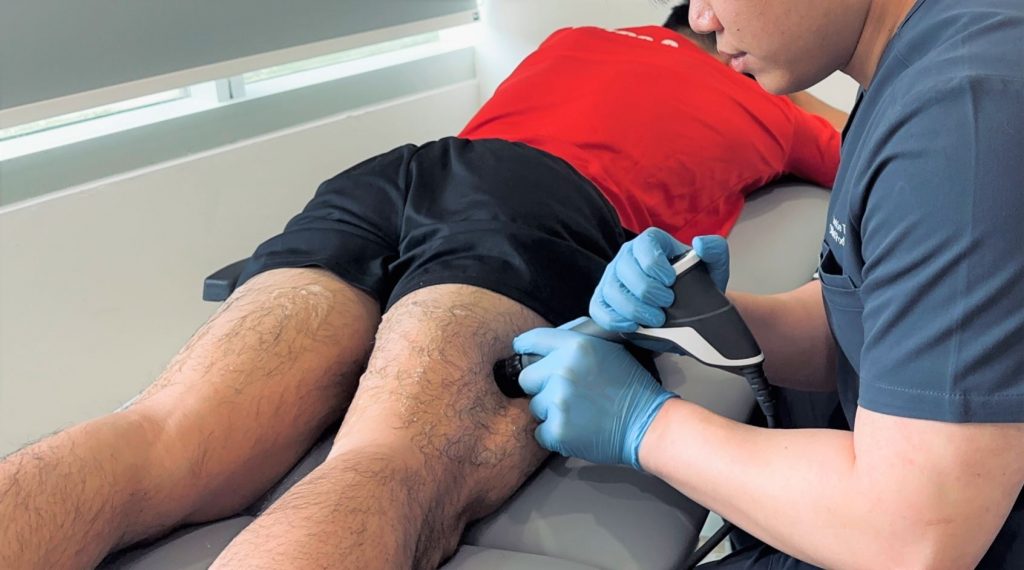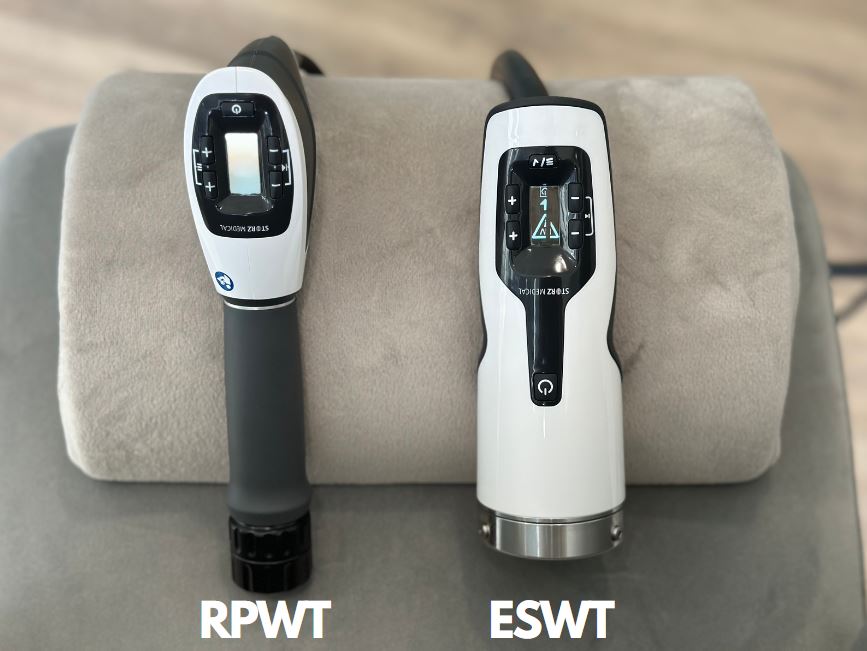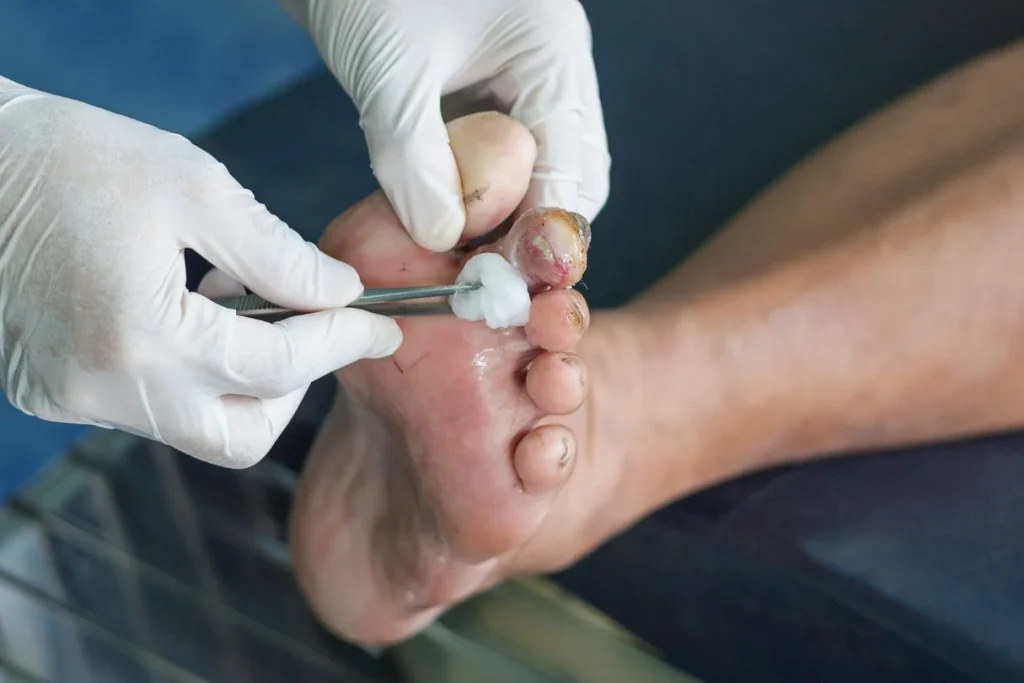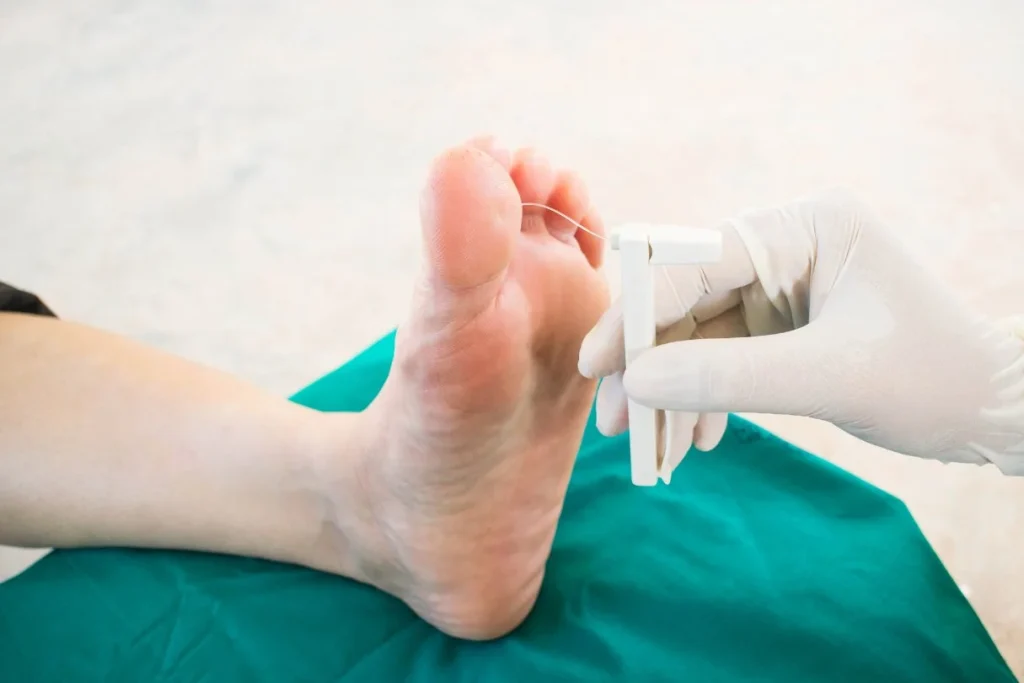RPWT is Not Shockwave Therapy
Many practices advertise RPWT as shockwave therapy, but it is incorrect. RPWT does not produce the same type of sound wave as extracorporeal shockwave therapy (ESWT). RPWT also delivers less energy, has less penetration depth, and cannot target specific points of injury compared to ESWT. Therefore it is generally used on muscles and not for bones, joints, tendons, or deep structures.
Need Help? See Our Podiatrist Today
Conditions Managed with Radial Pressure Wave Therapy
RPWT effectively manages muscular pain conditions, which include:
- Trigger points (e.g Calf, hamstrings)
- Myofascial pain syndromes Muscle tightness
- Superficial muscle strain (e.g Calf strain, hamstring strain) Muscle spasticity
- Chronic enthesopathy (e.g Achilles tendon, plantar fascia)

Benefits of RPWT
RPT offers several benefits for patients with lower limb conditions:
- Non-invasive: You do not have to worry about the risk of complications and the recovery time of surgery.
- Pain relief: RPWT reduces inflammation and stimulates the release of the body’s natural pain-relieving substances, relieving your pain.
- Increased mobility: RPWT helps you improve your mobility and function of the muscles by breaking down scar tissue and adhesions.
- Promote healing: RPWT increases blood flow and triggers tissue healing, allowing you to recover naturally.
RPWT Enhances Sports Recovery and Performance
Fitness and sports enthusiasts commonly suffer from trigger points, chronic muscular fatigue, muscle tightness, and muscle strains. These conditions can significantly impact your performance in sports. You will risk suffering from severe sports injuries and lengthy downtime if untreated.

Radial Pressure Wave Therapy vs Extracorporeal Shockwave Therapy
While both RPWT and ESWT are non-invasive treatments for musculoskeletal conditions, they differ in their mechanism of action, area of focus, penetration depth, and indications:
- Mechanism of action
- RPWT delivers pulsed pressure waves, whereas ESWT uses high-amplitude acoustic sound waves of much higher energy to stimulate tissue repair.
- Area of focus
- RPWT targets a broader area with no specific focus point, whereas ESWT targets a focal point of injury.
- Penetration depth
- RPWT typically targets tissues up to 5cm deep, whereas ESWT can do up to 12cm deep.
- Indications
- RPWT generally treats superficial conditions such as muscle strain and trigger points. In contrast, ESWT effectively targets deeper tendons or joints, specifically in the area of injury.
Share this with someone you know
Frequently Asked Questions
When Should Radial Pressure Wave Therapy be Avoided?
- Pregnancy
- Bleeding disorders (e.g. taking strong blood thinners, thalassemia, haemophilia)
- Active cancer (history of cancer should proceed with caution)
How Does Radial Pressure Wave Therapy Work?
Is Radial Pressure Wave Therapy painful?
How quickly can I expect to see results from RPWT?
Are there any side effects or complications associated with Radial Pressure Wave Therapy?
Can I continue my regular activities or exercise after receiving Radial Pressure Wave Therapy?
I have already tried other treatments without success. Can Radial Pressure Wave Therapy still work for me?
Yes. RPWT is an effective treatment option for patients who do not respond to conventional treatments such as stretching, strengthening, or mobilisation. However, the key to your treatment success lies in the accuracy of diagnosis. RPWT works by stimulating the body’s natural healing processes but is only most effective in treating muscular disorders. Suppose the cause of your pain is an injury to the bones, tendons, or joints. In that case, you will benefit from Extracorporeal Shockwave Therapy instead.
Search
Do You Have A Question? Ask Us...
Categories
- Ankle (4)
- Diabetic Foot (7)
- Feet (5)
- Knee (5)
- Paediatric Lower (5)
- Soft Tissue (3)
- Uncategorized (60)




